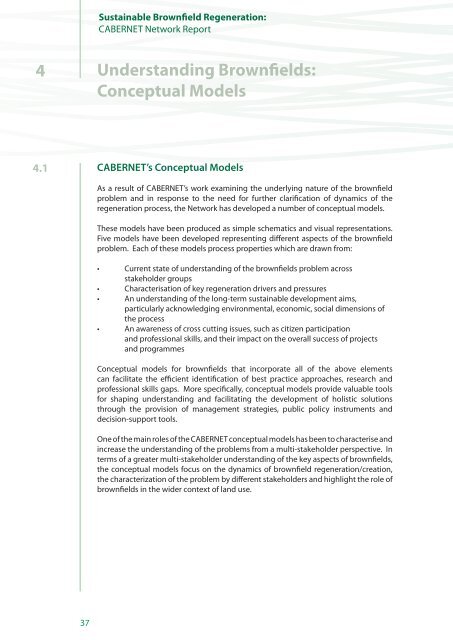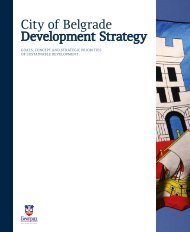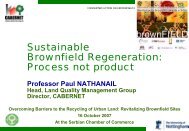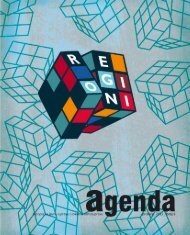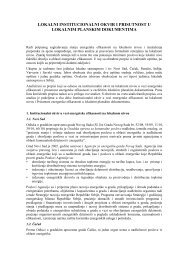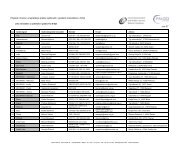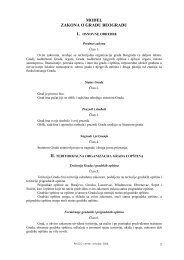Sustainable Brownfield Regeneration: CABERNET Network Report
Sustainable Brownfield Regeneration: CABERNET Network Report
Sustainable Brownfield Regeneration: CABERNET Network Report
Create successful ePaper yourself
Turn your PDF publications into a flip-book with our unique Google optimized e-Paper software.
<strong>Sustainable</strong> <strong>Brownfield</strong> <strong>Regeneration</strong>:<strong>CABERNET</strong> <strong>Network</strong> <strong>Report</strong>4Understanding <strong>Brownfield</strong>s:Conceptual Models4.1<strong>CABERNET</strong>’s Conceptual ModelsAs a result of <strong>CABERNET</strong>’s work examining the underlying nature of the brownfieldproblem and in response to the need for further clarification of dynamics of theregeneration process, the <strong>Network</strong> has developed a number of conceptual models.These models have been produced as simple schematics and visual representations.Five models have been developed representing different aspects of the brownfieldproblem. Each of these models process properties which are drawn from:• Current state of understanding of the brownfields problem acrossstakeholder groups• Characterisation of key regeneration drivers and pressures• An understanding of the long-term sustainable development aims,particularly acknowledging environmental, economic, social dimensions ofthe process• An awareness of cross cutting issues, such as citizen participationand professional skills, and their impact on the overall success of projectsand programmesConceptual models for brownfields that incorporate all of the above elementscan facilitate the efficient identification of best practice approaches, research andprofessional skills gaps. More specifically, conceptual models provide valuable toolsfor shaping understanding and facilitating the development of holistic solutionsthrough the provision of management strategies, public policy instruments anddecision-support tools.One of the main roles of the <strong>CABERNET</strong> conceptual models has been to characterise andincrease the understanding of the problems from a multi-stakeholder perspective. Interms of a greater multi-stakeholder understanding of the key aspects of brownfields,the conceptual models focus on the dynamics of brownfield regeneration/creation,the characterization of the problem by different stakeholders and highlight the role ofbrownfields in the wider context of land use.37


